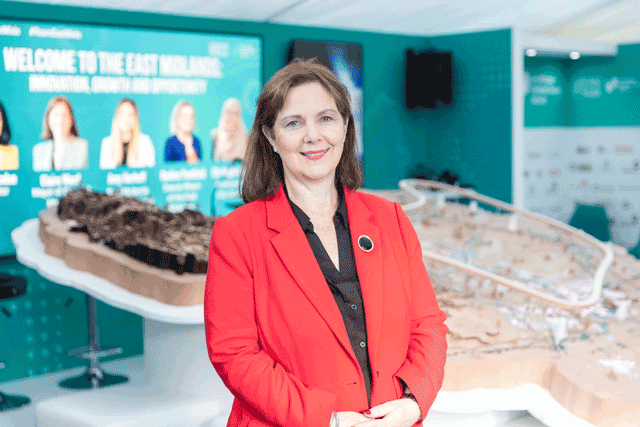Landlord and tenant – Service charge – Common parts – Respondents having long leases of maisonettes in block on former local authority estate – Appellant landlord seeking to recover costs of maintaining estate and district heating system through service charge – Whether entire estate falling within “common parts” under respondents’ leases – Whether lease terms requiring contribution to cost of maintaining heating system run from off-site plant – Appeal allowed
The respondents were the long leaseholders of two maisonettes in a block on a large former local authority housing estate in London E14, most of which had been transferred to the appellant landlord as part of a block transfer in 2006. The respondents’ leases were in a standard form used by the appellant’s local authority predecessor when granting long leases to tenants in the 1980s under the statutory right-to-buy scheme. They required leaseholders to contribute through the service charge to the landlord’s costs incurred in maintaining the “common parts”, which were defined to include all areas “comprising part of the Lessor’s Housing Estate and of which the Building forms part provided by the Lessors for the common use of residents in the Building and their visitors and not subject to any lease or tenancy to which the Lessors are entitled to the reversion”.
On an application to the leasehold valuation tribunal (LVT) under section 27A of the Landlord and Tenant Act 1985, the respondents disputed their liability to pay service charges in the amount demanded by the appellant for the years 2010 to 2012. The LVT accepted the respondents’ argument that they were not liable to contribute to: (i) “estate costs” incurred by the appellant in maintaining communal areas of the estate as a whole, as opposed to the curtilage and immediate environs of their own building; or (ii) costs incurred in connection with the maintenance of a district heating system, delivering heat and hot water to 495 homes on the estate, and installed in 2000 under a private finance initiative (PFI) as a replacement for the previous system and was run by an energy company from an off-site plant.
In relation to the estate costs, the LVT found that the evidence was insufficient to enable the full extent of the common parts to be identified and further found that part of the estate to which the costs related was not within the title out of which the lease had been granted. In relation to the heating system, it disallowed the sums demanded by the appellant because the off-site plant did not fall within the common parts and because of a lack of evidence concerning the basis of calculation of the charges, which it concluded were unreasonable.
The appellant appealed. In relation to the heating system, it contended that the recovery of the relevant costs did not depend on whether the system fell within the common parts but instead fell within other lease clauses concerning the maintenance and renewal of “any existing central heating and hot water apparatus in the Building and all ancillary equipment thereto” and entitling the landlord to undertake other works and installations which it considered necessary or advisable for the proper management maintenance and amenity of the Building.
Held: The appeal was allowed.
(1) When interpreting the expression “Common Parts” in the respondents’ leases, it was relevant that the lease was a standard document, capable of being used for the letting of residential property of different styles and in different locations, and was not drafted with the respondents’ building specifically in mind. Further, the building was part of a larger estate the boundaries of which would have been capable of ascertainment at the time when the leases were granted and would have been common knowledge at that time. Further, any assignee of the lease was in a position to make enquiries at the point of purchasing the lease to establish the extent of the estate referred to in the definition of the common parts. There was no suggestion that the boundaries of the estate had changed following the 2006 block transfer to the appellant, even though part of the estate had not been transferred. The leaseholders would have enjoyed the same use of the common parts as the tenants of other flats or maisonettes in the building and in the estate as a whole. While lettings of local authority accommodation did not usually include formal grants of rights over communal areas, the authority’s secure tenants generally enjoyed the use of common areas by virtue of implied rights: Liverpool City Council v Irwin [1977] AC 239; [1976] 1 EGLR 53; (1976) 238 EG 879 and 963 applied.
Moreover, the fact that the definition of common parts expressly included not only “other areas included in the Title above referred to” but also those “comprising part of the Lessor’s Housing Estate and of which the Building forms part” recognised the possibility that the common parts might be comprised in more than one registered title. Where the lessor’s housing estate was a larger area than the area included in the title referred to in the particulars to the lease, the common parts would comprise not only the areas specifically referred to but could be as large as the housing estate as a whole. The estate referred to in the definition of the common parts was the whole of the estate in which the respondent’s building was located, although it did not extent to the local authority’s other former estates in the same borough.
The description of the common parts as those “provided by the Lessors for the common use of residents in the Building and their visitors and not subject to any lease or tenancy to which the Lessors are entitled to the reversion” focused on the intention or purpose of the landlord and not on specific rights granted by the lease over defined areas. There was no evidence that particular areas of the estate were provided by the local authority for the use of residents of the respondents’ building to the exclusion of other residents of the estate. Areas clearly intended for use by residents of the estate as a whole were not, for that reason, any less intended for use by the residents of the respondents’ building and their visitors and the wider constituency of their users should not be a reason for excluding those areas from the scope of the common parts. It followed that the LVT had defined the common parts too narrowly and had erred in holding that the appellant was not entitled to recover estate costs.
(2) The LVT’s reasons for finding that the heating system costs were irrecoverable were insufficient to support its decision and did not deal with the justification for the charge relied on by the appellant. It was not open to the LVT to find that the heating system costs were unreasonable when that did not form part of the respondents’ case; moreover the LVT’s finding was not explained or supported by any evidence. Its further finding that the heating system was not included in the common parts missed the point since the appellant relied, not on covenants relating to the maintenance of the common parts, but on other clauses that dealt specifically with “any existing central heating and hot water apparatus in the Building and all ancillary equipment thereto” and permitted the landlord to undertake other works and installations which it considered necessary or advisable for the proper management maintenance and amenity of the Building.
Although, for the most part, the apparatus that had been supplied in substitution for the original central heating system was not “in the Building”, the lease provisions should be read in the context of the statutory implied covenant in Schedule 6 to the Housing Act 1985, requiring landlords to maintain services at a reasonable level and to keep associated service installations in repair. The statutory right-to-buy scheme of the 1985 Act was a relevant part of the context or background against which the lease provisions should be construed since the parties to the lease were to be taken to have had in mind the statutory right-to-buy scheme and the local authority’s standard lease would have been drafted in the knowledge that it was required to “conform” with the relevant parts of Schedule 6 of the 1985 Act. The statutory implied covenant was wide enough to impose on the landlord an obligation to repair any installation, including a district heating system, through which the landlord performed its obligation to ensure that the services that it provides were maintained at a reasonable level. The statutory implied covenant was not circumscribed by reference to the location of the installation, so the fact that a replacement heating system was not situated in the building was of no consequence. Since the renewal of the original heating system and the repair of the replacement heating system fell within the landlord’s obligation under the implied statutory covenant, they would be expected also to fall within the express obligation imposed by the lease.
Although the relevant lease clause in the lease was not widely drafted, the parties must have contemplated the likelihood of several different renewals of the central heating and hot water apparatus during the term. They were more likely to have intended that similar obligations would apply to each successive system irrespective of its particular design characteristics. There would be no logic in an agreement that the landlord should be obliged to maintain and renew to the fullest extent the existing apparatus in the building but not a replacement for that apparatus just because it happened to include components located outside the building. Moreover, because of the duration of the leases, and the expectation of successive renewals of the existing system and its replacement with equipment the specific characteristics of which could not be foreseen when the lease was entered into, it was inappropriate to focus too closely on the precise language adopted by the parties to describe the landlord’s obligations and better to give greater weight to the more general objective which they demonstrated. That general objective was that the apparatus through which central heating and hot water were made available to the demised premises should be maintained and renewed by the landlord at the tenant’s expense. Accordingly, the cost of maintaining the heating system was properly to be regarded as part of the appellant’s obligation under the lease clause dealing with the maintenance and renewal of heating and hot water apparatus.
Alternatively, that matter fell within the landlord’s covenant to do works that it considered necessary or advisable for the proper management, maintenance, safety, amenity or administration of the building. Although the court would normally be slow to treat such a provision as intended to cover the same subject matter as had already specifically been dealt with in another covenant, there was no reason to exclude it in circumstances where the maintenance of the heating system was part of the landlord’s obligation under the lease by virtue at the very least of the statutory implied covenant. It followed that costs incurred by the appellant in the maintenance and repair of the heating system, and in its renewal when required, were properly part of the total expenditure that could be taken into account in determining the annual service charge.
Ranjit Bhose QC (instructed by Judge & Priestley LLP, of Bromley) appeared for the appellant; the first respondent, Ian Kingham, appeared in person for the respondents.
Sally Dobson, barrister








